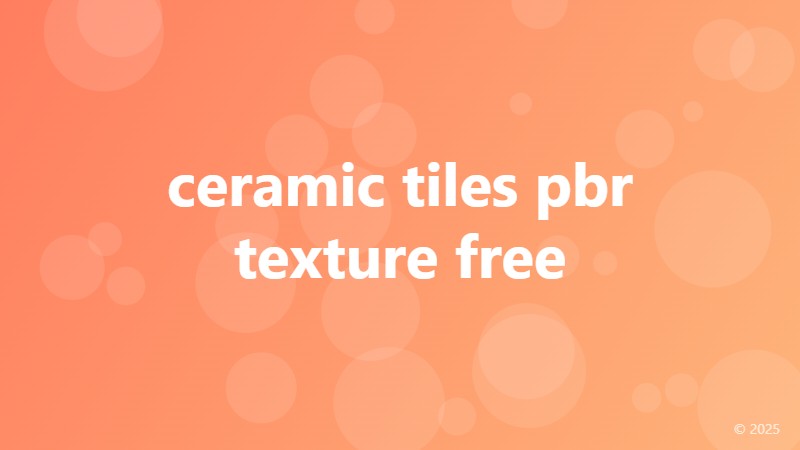ceramic tiles pbr texture free

The Power of Ceramic Tiles PBR Texture in Design
Ceramic tiles have been a staple in design for centuries, offering a unique blend of functionality and aesthetic appeal. With the advent of technology, designers can now take their ceramic tile designs to the next level with the use of Physically Based Rendering (PBR) textures. In this article, we'll delve into the world of ceramic tiles PBR texture and explore its benefits, as well as provide you with free resources to get started.
What are PBR Textures?
PBR textures are a type of 2D image that simulates the way light interacts with a material in the real world. By using complex algorithms and mathematical models, PBR textures can accurately mimic the reflective, metallic, and roughness properties of a material, giving designers unparalleled control over their designs.
Why Ceramic Tiles PBR Texture is a Game-Changer
Ceramic tiles are already a popular choice for interior design due to their durability, ease of maintenance, and versatility. However, with the addition of PBR textures, designers can now create highly realistic and immersive designs that were previously impossible. PBR textures allow designers to add subtle details such as wear and tear, grout lines, and material imperfections, giving their designs a level of authenticity that was previously unattainable.
Free Ceramic Tiles PBR Texture Resources
Luckily, there are many free resources available for designers looking to incorporate ceramic tiles PBR texture into their designs. Some popular options include:
- Textures.com: A comprehensive library of free PBR textures, including ceramic tiles.
- PolyHaven: A website offering a wide range of free PBR textures, including ceramic tiles.
- Poliigon: A platform providing high-quality PBR textures, including ceramic tiles, for free.
These resources offer a great starting point for designers looking to experiment with ceramic tiles PBR texture. With a little creativity and experimentation, the possibilities are endless.
Conclusion
In conclusion, ceramic tiles PBR texture is a powerful tool that can elevate any design to the next level. With its ability to simulate real-world materials and add subtle details, PBR textures offer designers unparalleled control over their designs. Whether you're a seasoned designer or just starting out, incorporating ceramic tiles PBR texture into your workflow can open up new possibilities and take your designs to new heights.